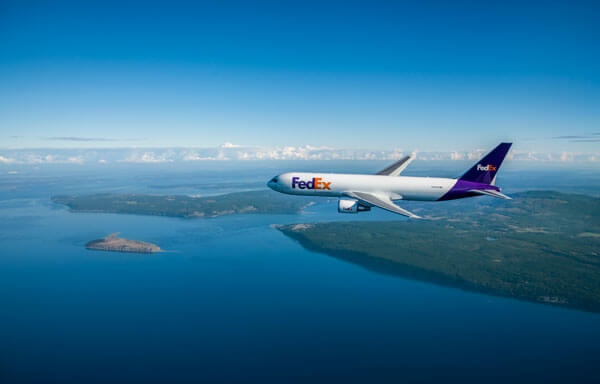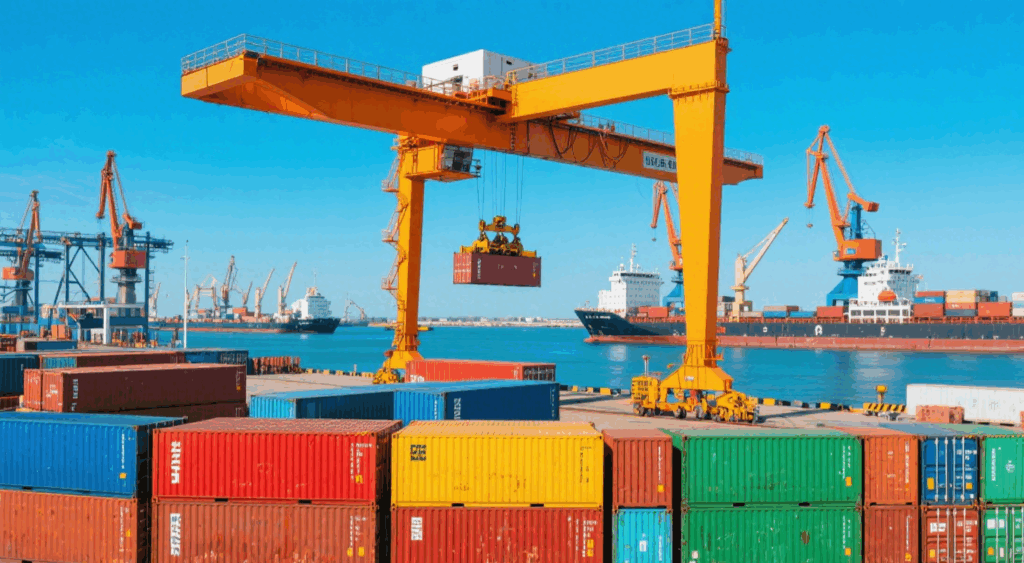- By Della tj
- October 17, 2025
- Rail Freight, Shipping
Global supply chains increasingly depend on efficient rail networks between Asia and Europe. Choosing professional rail freight from China to Belgium gives companies a balance of cost, speed, and environmental sustainability. As trade between China and the EU continues to expand, this route has become a core logistics corridor for manufacturers, retailers, and e-commerce businesses alike.

1. Why Businesses Prefer Rail Freight from China to Belgium
Rail freight stands between sea and air shipping, offering faster transit than maritime transport but at far lower prices than air cargo. Belgium, particularly Liège and Antwerp, serves as a strategic entry point for goods heading across Western Europe.
Advantages of Rail Freight:
- Transit times average 15–20 days, cutting delays in half compared to sea freight.
- Lower costs — typically 40–60% cheaper than air transport.
- Reliable timetables supported by the China–Europe Express network.
- Lower CO₂ emissions, supporting green logistics initiatives.
- Simplified customs clearance through bonded zones in Belgium.
In addition, rail freight helps stabilize supply chains during peak seasons or maritime congestion, ensuring your goods arrive on time and within budget.
2. How Rail Freight from China to Belgium Operates
The process of shipping by rail involves multiple checkpoints that ensure cargo safety and compliance from departure to destination.
Step-by-Step Process:
- Booking & Documentation: Freight forwarders confirm container type (FCL or LCL), cargo details, and prepare paperwork.
- Cargo Collection: Goods are transported from Chinese factories to inland terminals such as Chengdu or Xi’an.
- Rail Transit: Trains depart through Kazakhstan, Russia, and Poland, finally reaching Belgium.
- Customs Clearance: Digital pre-declarations accelerate clearance on both ends.
- Final Delivery: Goods are transferred to trucks or local rail for distribution within the EU.
Tip: Working with a professional logistics partner ensures accurate documentation, real-time tracking, and smooth customs coordination.
3. Major Routes and Transit Times
Belgium’s growing participation in the Belt and Road rail network provides strong connectivity with several Chinese cities.
| Route | Origin City (China) | Destination (Belgium) | Transit Time (Days) | Frequency |
|---|---|---|---|---|
| Chengdu – Liège | Chengdu | Liège | 16–18 | 3 departures/week |
| Xi’an – Antwerp | Xi’an | Antwerp | 17–19 | 2 departures/week |
| Wuhan – Ghent | Wuhan | Ghent | 19–20 | 2 departures/week |
| Chongqing – Liège | Chongqing | Liège | 18–20 | 1–2 departures/week |
Moreover, Liège has developed into one of Europe’s busiest e-commerce logistics hubs, handling major cargo for Alibaba, JD Logistics, and European retailers.
Ready to streamline your shipping? Contact us today for a fast, Partner with TopChinaFreight to receive a tailored logistics solution that matches your shipping needs.
4. Cost Comparison: Rail vs Sea vs Air Freight
Pricing depends on route, cargo volume, and container type. However, rail freight remains the most cost-effective for medium to high-value shipments that require speed and predictability.
| Transport Mode | Cost (USD/CBM) | Transit Time (Days) | Main Advantages | Disadvantages |
|---|---|---|---|---|
| Air Freight | $6 – $10 | 5–7 | Fastest delivery | High cost |
| Sea Freight | $0.8 – $1.5 | 35–40 | Lowest cost | Slow, port delays |
| Rail Freight | $2 – $4 | 15–20 | Balanced, eco-friendly | Limited capacity |
For example, a 40FT container shipped by rail typically costs around $3,000–$3,800, compared to $6,000 by air or $1,500 by sea. While rail is slightly pricier than sea freight, its faster turnaround often justifies the investment for time-sensitive goods.
5. Customs and Documentation Requirements
Proper documentation ensures smooth border crossing and customs clearance in both China and Belgium.
| Document | Purpose |
|---|---|
| Commercial Invoice | Lists shipment value, HS codes, and buyer/seller details |
| Packing List | Describes quantities, weights, and packaging methods |
| Rail Waybill | Acts as a transport contract and proof of shipment |
| Certificate of Origin | Certifies manufacturing country |
| Import Declaration | Filed electronically to Belgian Customs |
| Insurance Policy | Protects goods against transit risks |
Additionally, freight forwarders manage electronic customs pre-clearance through digital platforms, saving importers days of waiting time.
6. Case Studies: Real Rail Freight Projects
Case 1: Electronics from Chengdu to Liège
- Cargo: Laptops and accessories
- Weight: 12 tons (2×40FT containers)
- Transit Time: 17 days
- Cost: $3,700 per container
- Result: 45% faster than sea shipping, ensuring quick distribution to EU stores.
Case 2: Furniture from Xi’an to Antwerp
- Cargo: Flat-packed furniture
- Weight: 20 tons (1 FCL)
- Transit Time: 18 days
- Cost: $3,200 per container
- Outcome: Lower logistics cost by 35% compared to air; improved stock availability.
7. Delivery Efficiency and Environmental Benefits
Rail freight’s strategic value extends beyond speed — it’s also the greenest overland shipping solution.
| Mode | CO₂ Emissions (kg per ton/km) | Energy Efficiency |
|---|---|---|
| Air Freight | 570 | Low |
| Sea Freight | 15 | Medium |
| Rail Freight | 20 | High |
On the other hand, Belgium’s intermodal infrastructure connects Liège, Antwerp, and Ghent directly with Germany, France, and the Netherlands. Once goods arrive, they can reach:
- Germany within 2–3 days,
- France within 3–4 days,
- Netherlands within 1–2 days.
This seamless integration enables just-in-time delivery and strengthens European distribution networks.

8. Factors to Consider When Choosing a Rail Freight Partner
Selecting a reliable logistics provider is essential for consistent performance. Consider the following factors:
- Route Expertise: Providers with established China–Belgium operations ensure predictable departures.
- Customs Knowledge: Compliance with both EU and Chinese export regulations reduces clearance delays.
- Tracking Technology: Real-time visibility helps monitor shipments end-to-end.
- Insurance & Risk Control: Protects cargo from damage or theft.
- Door-to-Door Solutions: Adds convenience with integrated trucking and warehousing.
Therefore, partnering with a professional forwarder guarantees not only punctual delivery but also optimized logistics costs and service continuity.
Conclusion
To summarize, professional rail freight from China to Belgium delivers a perfect blend of affordability, reliability, and sustainability. It enables faster market access than sea shipping and costs significantly less than air freight. With well-developed hubs in Liège, Antwerp, and Ghent, Belgium stands as a key European gateway for Chinese exports.
Ultimately, investing in this logistics route ensures optimized supply chain management, consistent delivery, and improved cost efficiency — making it the smart choice for global businesses in 2025 and beyond.
Request a Quote
Need a tailored solution for your shipping from China?
Let TJ China Freight Forwarder assist you with reliable, cost-effective service.
FAQ:
Q1.What makes professional rail freight from China to Belgium more reliable than sea transport?
Rail freight offers fixed schedules, fewer weather disruptions, and consistent delivery, ensuring a stable and predictable supply chain.
Q2.Can small businesses use rail freight services from China to Belgium?
Yes, LCL options allow smaller companies to share containers, making rail freight affordable and efficient for limited cargo volumes.
Q3.Does rail freight from China to Belgium include customs clearance services?
Most professional freight forwarders handle full customs documentation, declarations, and import duties on behalf of clients for smooth delivery.
Q4.Are dangerous or restricted goods allowed on the China–Belgium rail route?
Certain hazardous materials can be transported, but shippers must comply with international ADR safety standards and provide special declarations.
Q5.How can I reduce costs when booking rail freight from China to Belgium?
Plan shipments early, consolidate goods, and choose direct rail routes from major Chinese hubs like Chengdu or Xi’an for savings.



